How to Tell an Overwatered Spider Plant & How to Revive it
The spider plant (Chlorophytum comosum) is an easy-to-care-for houseplant, which is why I recommend it to many beginner plant moms and dads. Despite being low-maintenance, new owners often overwater spider plants without even knowing it.

Overwatering is such a risky practice as it can kill the plant. If the plant suddenly looks less perky with discolored foliage, the problem could be excess water. To save the plant, you need to recognize the signs of overwatering and fix the problem quickly.
I’m Alex Worley, a certified master gardener with over 7 years of experience caring for houseplants. I’ve grown dozens of spider plants and helped troubleshoot customers’ overwatering issues at my local nursery. For more about my background in gardening and professional experience advising clients on houseplant care, see my bio here. In this article, I’ll help you spot the signs of overwatering and save your spider plant using the expertise I’ve developed over the years.
Signs of Overwatering in Spider Plants
When sitting in waterlogged soil, spider plants can develop serious problems, such as root rot, that can kill them if not fixed soon enough.
Here’s how to tell your spider plant is overwatered:
Yellowing leaves
The earliest sign of overwatering is yellowing leaves. At the onset of overwatering, the lower leaves of the spider plant progressively turn from lush green to pale green to yellow and can worsen to brown.
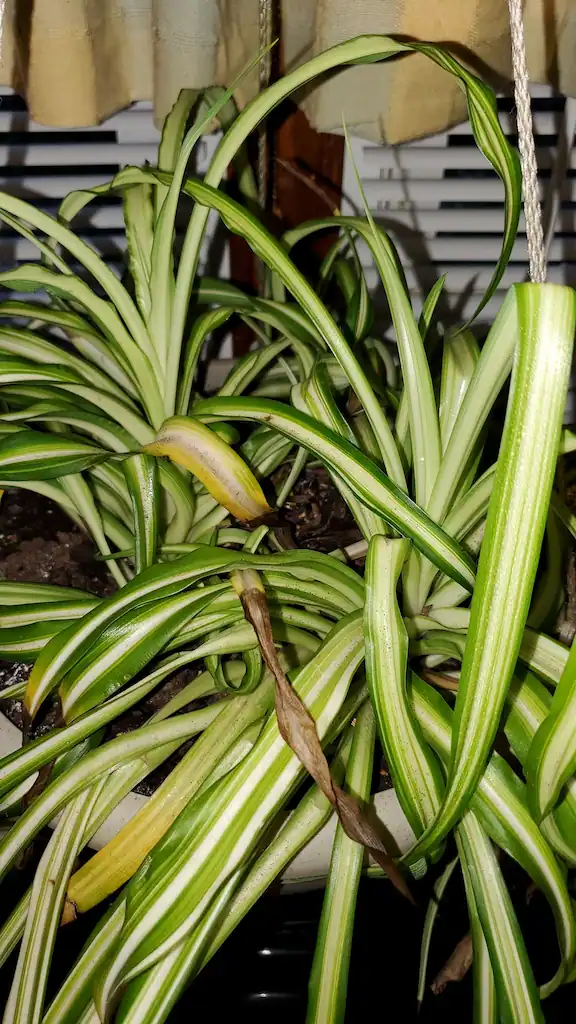
Leaves at the base of the plant are the first to be affected, but the signs will manifest on more leaves if the problem is not remedied. The leaves will also start to wilt and drop off.
Leaf yellowing in spider plants usually starts at the tips or edges of the leaves and spreads inward if overwatering persists.
The yellowing results from the plant’s roots suffocating and being unable to absorb nutrients to nourish the rest of the plant.
Simply look at the overall color of the plant – if more and more leaves are turning yellow, you likely have an overwatering problem on your hands.
Drooping leaves
Overwatering your spider plant suffocates roots, impairing their ability to take up water and nutrients effectively. This stresses the plant and causes the leaves to droop and wilt, even when the soil is wet.
It’s the plant equivalent of drowning.
If the leaves of your spider plant are wilting- whereby they assume a droopy and shriveled appearance- it could be that you’re overhydrating the plant.
Note that the plant’s leaves can also wilt due to underwatering, so I advise checking the soil moisture level while diagnosing the plant.
Root rot disease
Root rot can be difficult to identify because the main signs occur in the plant’s root zone. Excess moisture creates a conducive environment for fungi that cause roots to decay.
The rotting roots of an overwatered spider plant usually appear brown, mushy, and slimy.
Unfortunately, the only way you can be certain the plant is suffering from root rot is by removing it from the pot and inspecting the roots.
Leaves turning brown
If there are brown spots on the leaves of your spider plant, you’re most likely overwatering it. These unsightly spots start off as minute-sized specks before morphing into larger brown patches.
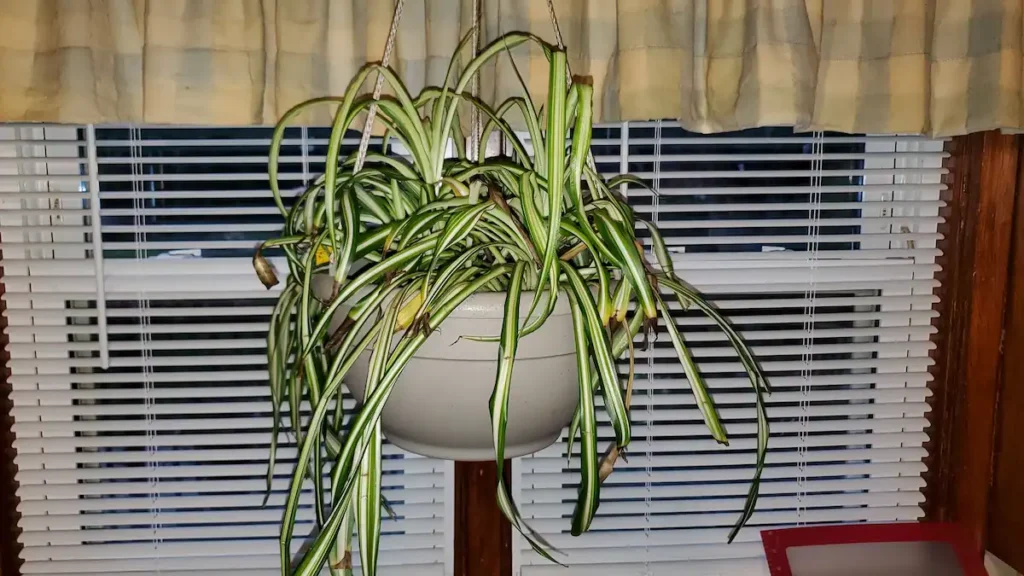
Oversaturated soil prevents proper water and nutrient absorption. The plant’s leaves essentially starve and dehydrate despite the plant being soaked at the roots. The browning damage occurs first at the tips and edges, spreading inward across the entire leaf as conditions remain too wet.
See also reasons for brown spider plant leaf tips.
NOTE: In my experience, seeing a few brown spots isn’t necessarily cause for alarm – it can happen occasionally, even in ideal conditions. But if the browning spreads across many leaves, it’s a red flag for overwatering. The same goes if the brown leaves rapidly weaken and drop off the plant.
Browning leaf edges
If the leaf edges of your spider plant appear brown, over-hydration is the most likely cause.
Like many plants, spider plants tend to channel water away from the center of the leaves toward the periphery.
As the leaf tissues at the tips and edges reach their moisture retention capacity, they rapture, causing browning at the edges.
Waterlogged soil
If the soil on which your spider plant grows appears too wet, it can no longer hold any more water. Soil with poor drainage is more likely to cause spider plant overwatering, as it cannot drain moisture fast enough.
Waterlogged soil may also show signs of fungal growth, including mold and mildew right on the surface.
Leaves falling off
As spider plant leaves continue to wilt due to over-irrigation, they start dropping off.
It is normal for plants to lose old foliage, but if young leaves are also dropping, you’d be right to suspect overwatering or another problem that’s worth diagnosing.
SIDE NOTE:
Keep in mind that overwatering will attract not only fungi but also pests. A rotting medium attracts silverfish, earwigs, and flies.
A weakened plant is also prone to attacks by other pests, such as mealybugs, aphids, and whiteflies. Most of these pests prefer to infest the lower side of the foliage.
How to save an overwatered spider plant
Here are steps to follow to save the spider plant:
1. Stop watering the plant for a while
The first step in saving an overwatered spider plant is to stop watering the plant immediately. We want to ensure the soil loses excess water so the plant can breathe again and draw nutrients.
Once the plant revives, reduce the watering frequency and fix any drainage issues. By this, I mean if your pot does not have a drainage hole at the bottom, drill one in it.
Remove any fully browned leaves to prioritize new growth. With time and improved conditions, the plant can grow fresh new foliage.
2. Drain the excess water
If the soil is still waterlogged, draining the excess water will help the plant heal faster.
- Remove the plant from its pot and gently loosen the root ball with your hands or a fork.
- Place the root ball on a layer of paper towels or old newspaper to allow excess water to drain from the roots.
- Repot the plant in a container with at least 2 drainage holes. I prefer using a fresh, dry soil mix. I recommend adding extra perlite or vermiculite to the potting mix to improve drainage.
Tipping the pot on its side and propping it up at an angle for several hours can also help speed up water runoff.
Also, consider using terra cotta pots instead of plastic going forward. Terracotta breathes better and helps the soil dry out faster.
The next steps you’ll take to revive the plant from here will depend on whether root rot had occurred or not by the time you diagnosed the watering issue.
3. Treat root rot
If the roots of your spider plant have a slimy texture, a bad odor, and a black/brown shade, it means they’re rotten due to overwatering. To solve this problem and save the plant, follow the procedure outlined below:
- Gently remove the plant from the pot and look at the roots. Brown, slimy, or foul-smelling roots mean root rot disease.
- Trim away any severely damaged roots using sterilized pruning shears. Cut at least an inch above the decaying areas. Isopropyl alcohol is a good sterilizing solution.
- Gently wash the remaining healthy roots with room temperature water to remove fungi-infested soil and debris. Pat dry with a paper towel.
- Treat the remaining roots – Apply a weak hydrogen peroxide solution or use a commercial fungicide solution.
- Repot the plant in a clean pot using a fresh, sterile potting mix. I recommend using a blend with perlite or bark to improve drainage.
- Trim the foliage – cut back some of the spider plant’s top growth to reduce strain on the remaining roots.
- Place the plant in bright, indirect light while it recovers. Avoid wetting the leaves.
- After a day or two, water the repotted plant with water infused with a fungicide solution to prevent the rot from spreading. Let it drain thoroughly.
The plant should take about 10 days to begin showing recovery signs. Soon enough, you’ll enjoy the benefits of the spider plant again.
4. Allow the soil to dry out between waterings
This is more of a preventative measure. Hold off on watering until the soil feels dry to the touch.
You can’t go wrong with the ‘soak and dry’ method. With this method, you give your spider plant a good drink and then wait until the top inch or two of soil has dried out before watering again.
My final thoughts
A spider plant growing in soggy conditions will show signs of ill health and unhappiness. Drooping leaves, brown spots and marks on the leaves, and stunted growth are some symptoms you’ll notice on the plant.
I recommend moving the plant to a shaded area and removing it from the pot. Let it sit for a few hours, then prepare a new potting mix and repot the spider plant to save it from overwatering.
Water lightly until the spider plant revives, then place it where there’s bright indirect sunlight.
FAQ
The preferred watering frequency for spider plants is once every 1-2 weeks. Water only when the top inch or two of soil has dried out. Allowing the soil to dry out between waterings prevents overwatering.
No, overwatering can seriously damage a spider plant. It causes issues like root rot from fungus, yellow leaves, and leaf drop.
An overwatered spider plant will have yellowing or browning leaves, soft or rotting roots, fungus growth, and leaf drop while an underwatered plant will have crisp brown leaf tips and a severely dried-out root ball.


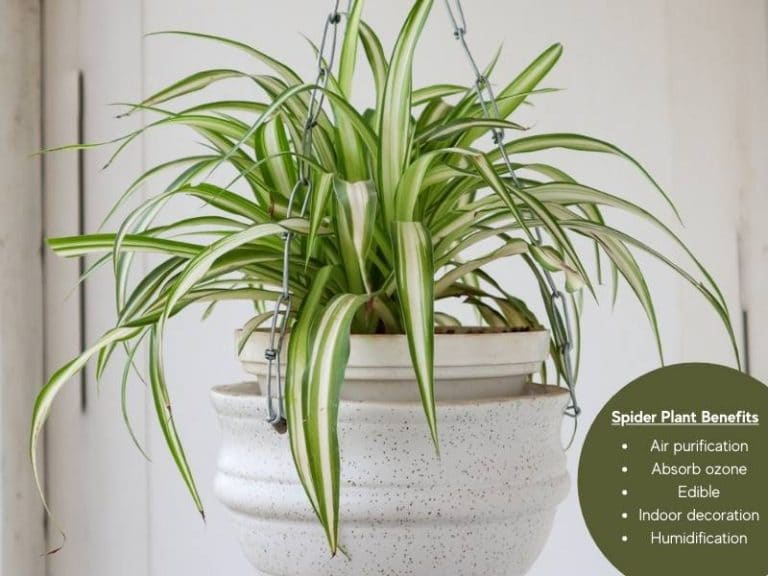
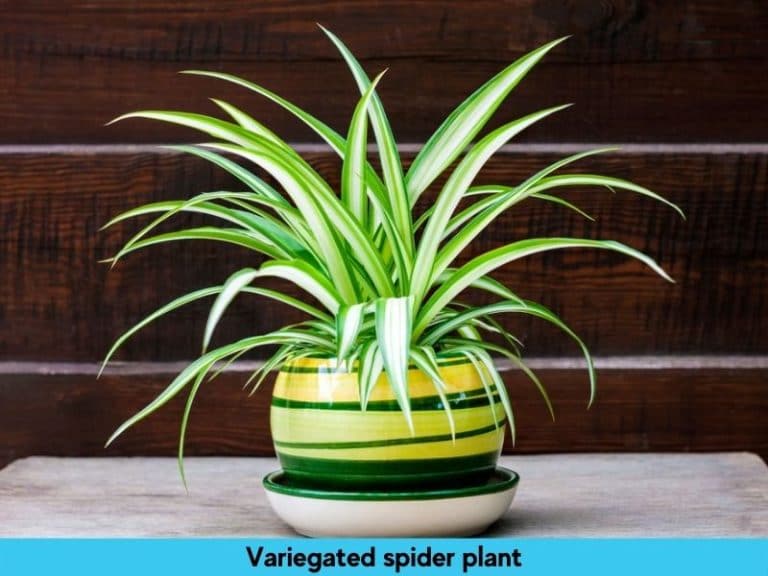
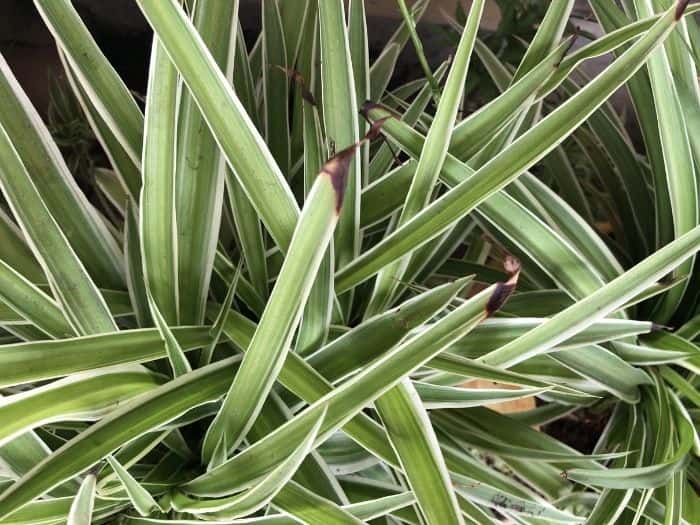
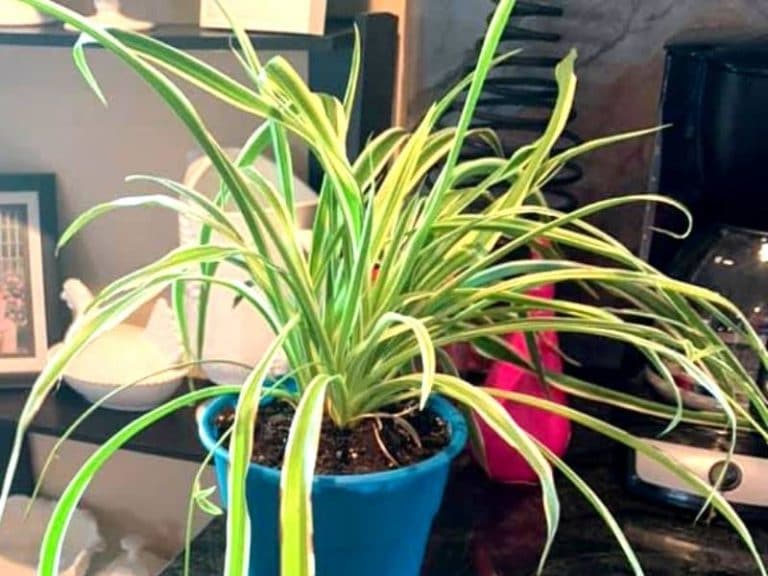
My plant is drooping and getting brown leaves.
Do I need to repot it?
It is a large full plant and I am sick because it is obviously sick.
Thankyou for any advise
Hello Lesley! I’m sorry to hear your spider plant is struggling. Based on the symptoms you’ve described of drooping, brown leaves, and the plant looking “sick,” it sounds like a watering problem and likely root rot depending on the texture of the black leaves.
Start by checking the soil moisture by sticking your finger in the soil. If it’s soggy, the plant is likely overwatered. Spider plants prefer to dry out between waterings.
If it is overwatered, stop watering and let the soil dry out completely before watering again. I’d also take it out of the pot and let it sit bare root on a newspaper for a few hours to lose the excess water.
If the brown leaves have crispy tips, it can mean under-watering. If the soil is bone dry, give it a good, thorough soaking and see if it perks up in a few days.
Repotting into fresh, well-draining soil can help an overwatered plant. I’d recommend a mix of regular potting soil with added perlite for drainage. And make sure the pot has holes at the bottom.
Remove any leaves or stems that are dead, mushy, or rotting to help revive the plant quickly.
If you need further help, please reach out via alex@gardenine.com. I’ll be happy to look at the plant and help you fix it. You can send photos of the plant to help clarify any issues.